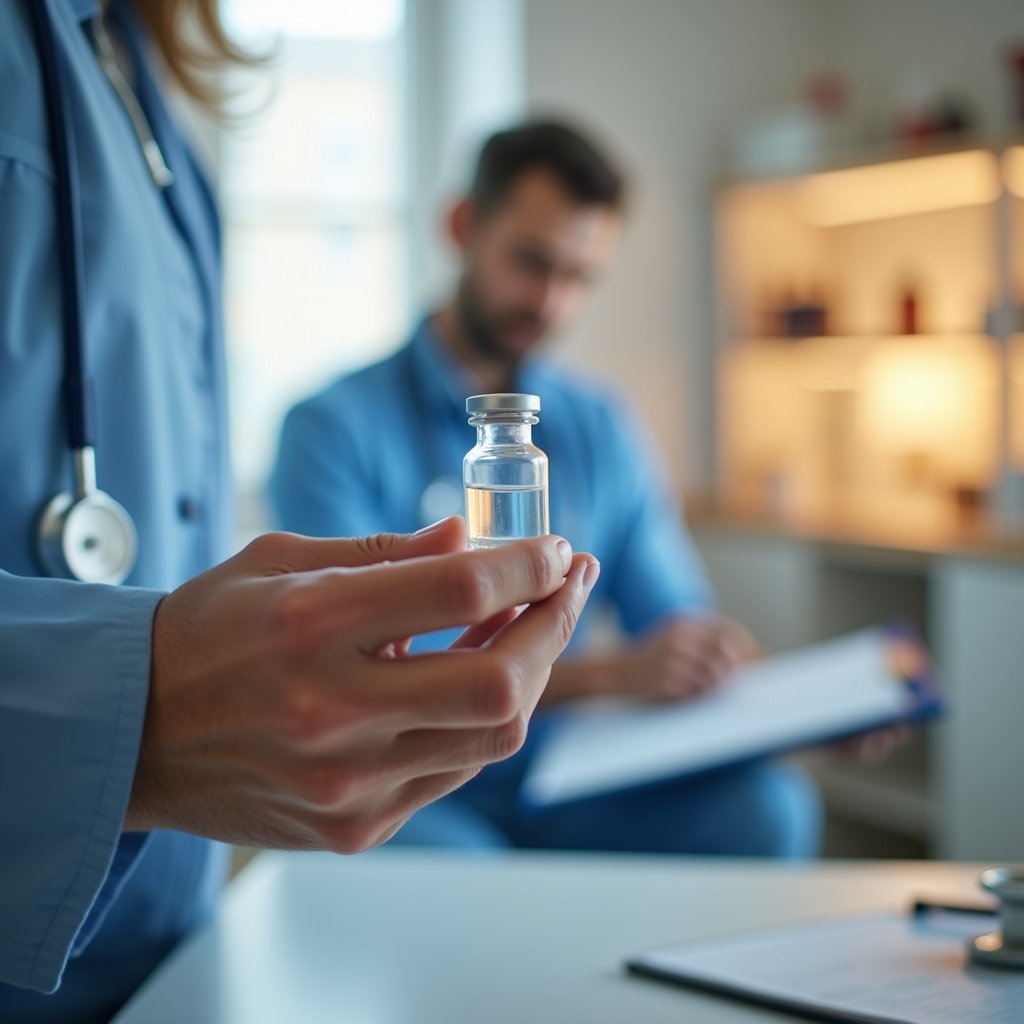Exercise triggers powerful biological adaptations in your body, improving health through multiple systems. You’ll see up to 50% increases in cellular mitochondrial density for better energy production, 40% greater capillary networks for improved oxygen delivery, and 242% activation of muscle-building mTOR pathways. Your cardiovascular system remodels with enhanced heart efficiency, while your immune function strengthens through reduced inflammation markers. These molecular and systemic changes represent just the beginning of exercise’s transformative effects.
Key Takeaways
- Exercise increases mitochondrial density by 50%, enhancing cellular energy production and improving overall metabolic efficiency through aerobic respiration.
- Regular physical activity triggers muscle hypertrophy and protein synthesis, leading to increased strength and enhanced physical performance.
- Cardiovascular adaptations include improved heart efficiency, increased blood vessel elasticity, and 40% higher capillary density for better oxygen delivery.
- Exercise enhances immune function by activating NK cells, promoting T-cell proliferation, and reducing inflammatory markers like IL-6 and TNF-α.
- Physical activity improves insulin sensitivity and hormonal regulation, optimizing glucose utilization and energy system adaptations throughout the body.
Cellular Adaptations and Mitochondrial Enhancement

When you engage in regular physical exercise, your body undergoes significant cellular adaptations that improve its metabolic efficiency. Your muscle cells increase their mitochondrial density by up to 50%, boosting your capacity to generate ATP through aerobic respiration. This adaptation occurs through complex cell signaling pathways that respond to mechanical stress and energy demands.
Exercise also triggers hormetic responses to oxidative stress, strengthening your cellular defense mechanisms. Your cells produce more antioxidant enzymes and heat shock proteins, which protect against future stressors. The mitochondria themselves become more efficient, improving their ability to oxidize fatty acids and glucose while reducing reactive oxygen species production. These adaptations lead to improved endurance, faster recovery times, and enhanced metabolic flexibility, allowing your body to better utilize different fuel sources during physical activity.
Cardiovascular System Responses and Remodeling

As your body adapts to regular exercise, the cardiovascular system undergoes substantial structural and functional remodeling. Through consistent training, your heart muscle becomes more efficient, leading to a lower resting heart rate and reduced blood pressure. These adaptations improve your body’s oxygen delivery system and general circulatory function.
- Your left ventricle develops increased chamber size and wall thickness, enabling greater stroke volume and cardiac output.
- Your blood vessels become more elastic and develop improved vasodilation capacity, enhancing blood flow regulation.
- Your capillary density increases by up to 40%, maximizing oxygen delivery to working muscles.
These cardiovascular adaptations result in improved exercise tolerance, reduced cardiovascular disease risk, and boosted endurance capacity. The remodeling process typically begins within weeks of starting a regular exercise program and continues progressively with maintained training.
Metabolic Pathways and Hormonal Regulation

During exercise, your body activates complex metabolic pathways that regulate energy production and substrate utilization. Your metabolic rate increases markedly as your muscles demand more energy, triggering hormonal responses that boost fat oxidation and glucose uptake. Exercise improves your insulin sensitivity, allowing cells to utilize glucose more efficiently.
| Hormone | Primary Function | Exercise Response |
|---|---|---|
| Insulin | Glucose regulation | Sensitivity increases |
| Cortisol | Energy mobilization | Levels rise temporarily |
| Growth Hormone | Tissue repair | Secretion amplified |
| Catecholamines | Energy availability | Production raised |
These hormonal changes optimize your body’s energy systems, promoting both immediate performance and long-term adaptations. You’ll experience improved substrate metabolism, better mitochondrial function, and enhanced glucose homeostasis. Your body becomes more efficient at utilizing both carbohydrates and fats for energy production, leading to improved metabolic flexibility.
Muscular Development and Protein Synthesis
Through consistent physical training, your muscles undergo significant structural and functional adaptations driven by molecular signaling cascades. When you exercise, you’ll trigger muscle hypertrophy through mechanical tension and metabolic stress, activating protein metabolism pathways that improve muscle fiber growth and strength.
- Your muscle fibers experience microtrauma during resistance training, stimulating satellite cell activation and protein synthesis rates up to 48 hours post-exercise
- Your mTOR signaling pathway increases by 242% during intense exercise, controlling cellular growth and protein synthesis
- Your muscle protein breakdown initially increases, but net protein balance becomes positive within 3-4 hours post-workout when adequate amino acids are available
This biological process leads to improved muscular strength, enhanced metabolic function, and greater overall physical performance capacity.
Immune System Function and Inflammation Control
Physical exercise not just builds muscle strength but also modulates your immune system’s response and inflammatory markers. When you engage in regular moderate exercise, you’ll trigger anti-inflammatory responses that improve your immune function while reducing chronic inflammation levels in your body.
| Exercise Type | Immune Response | Inflammation Markers |
|---|---|---|
| Moderate Cardio | NK cell activation | ↓ IL-6 levels |
| HIIT Training | T-cell proliferation | ↓ TNF-α production |
| Resistance Training | Macrophage function ↑ | ↓ C-reactive protein |
Your body’s immune response becomes more efficient through consistent physical activity, as exercise mobilizes immune cells and boosts their surveillance capacity. Research shows that individuals who exercise regularly experience fewer upper respiratory tract infections and demonstrate improved vaccination responses compared to sedentary populations.
Frequently Asked Questions
How Long Does It Take to See Physical Changes From Exercise?
You’ll notice preliminary physical transformation timeline markers within 4-8 weeks of consistent exercise. Fitness progress indicators include muscular strength gains (2-4 weeks), cardiovascular improvements (2-3 weeks), and visible body composition changes (6-12 weeks). Neural adaptations occur initially, followed by muscular hypertrophy. You’ll experience improved endurance within 2 weeks, while significant physical transformations typically require 8-12 weeks of dedicated training with proper nutrition and recovery.
Can Exercise Help Improve Sleep Quality and Duration?
Yes, you’ll experience better sleep quality when you exercise regularly. Physical activity stimulates the release of sleep hormones like melatonin and reduces cortisol levels, helping regulate your sleep-wake cycle. Exercise intensity matters moderate to vigorous activities can increase your deep sleep phases by up to 45%. You’ll typically notice improvements within 2-4 weeks of consistent exercise, though even a single session can elevate that night’s sleep quality.
What Role Does Genetics Play in Exercise Outcomes?
Your genetic predisposition considerably influences how you’ll respond to different types of exercise. Research shows that exercise variability among individuals can be 20-70% hereditary, affecting factors like muscle fiber composition, aerobic capacity, and strength gains. You’ll find that some people naturally excel at endurance activities while others build muscle more easily. However, regardless of genetics, you can still achieve meaningful fitness improvements through consistent training.
Does Exercising at Different Times of Day Affect Results Differently?
Your body responds differently to morning workouts versus evening sessions due to circadian rhythm variations. Morning exercise typically boosts fat burning and improves mental alertness through increased cortisol levels. Evening workouts often yield better performance outcomes as your body temperature peaks, muscle strength is at its best, and reaction time is faster. However, your individual chronotype (genetic predisposition to time-of-day preferences) can influence these effects.
How Does Aging Impact the Body’s Response to Exercise?
As you grow older, your body’s response to exercise undergoes significant changes. You’ll experience decreased muscle regeneration capacity due to reduced satellite cell activation and protein synthesis. Hormonal changes, including lower testosterone and growth hormone levels, impact your recovery and muscle-building potential. Your muscle fibers become less responsive to exercise stimuli, and you’ll notice slower adaptation rates to training. These age-related changes typically accelerate after the milestone of 50.





